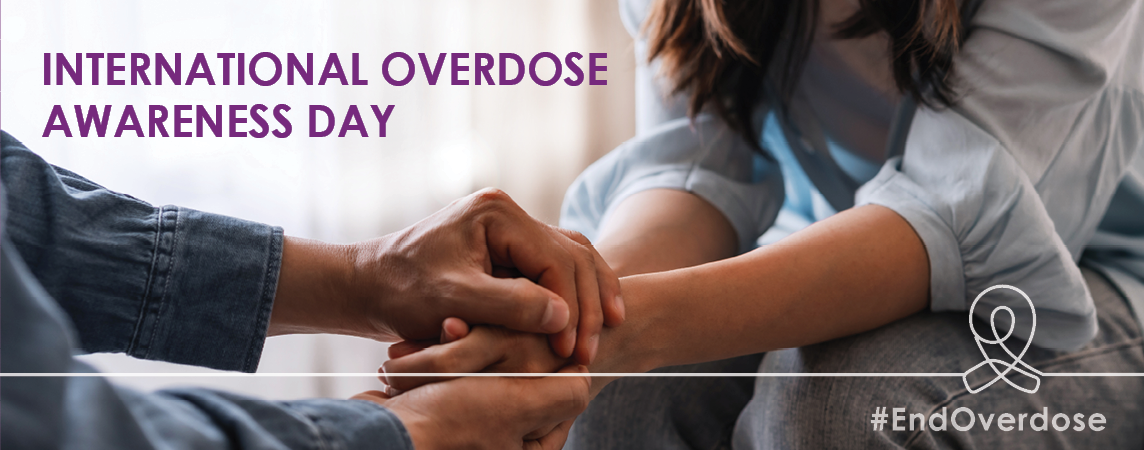
Center for Disease Control
August 31 marks International Overdose Awareness Day (IOAD), the world’s largest annual campaign to end overdose. It’s a day to:
- Remember loved ones who have died from drug overdose and acknowledge the grief of the family and friends left behind.
- Take action to encourage support and recovery for everyone impacted by substance use and overdose.
- End overdose by spreading awareness of overdose prevention strategies.
We wanted to spread awareness Hashtags: #IOAD2023 #EndOverdose
You can inform others of what can be done to end overdose by sharing these IOAD resources with your friends, family, and colleagues. Examples of how to get involved include:
- Posting IOAD messages and using the hashtag #IOAD2023 and #EndOverdose on social media.
- Sharing IOAD digital content, web features, and materials online.
- Using the sample articles to share IOAD information with communities and healthcare providers in newsletters, emails, and other partner communications.
- Downloading free educational materials and participating in interactive training for patients and healthcare providers.
- Educating communities at risk and healthcare providers at meetings, health fairs, conferences, and other events.
How to recognize an overdose
Recognizing an overdose can be difficult. If you aren’t sure, it is best to treat the situation like an overdose—you could save a life. Call 911 immediately. Administer naloxone, if it’s available. Do not leave the person alone. Signs of an overdose may include:
- Small, constricted “pinpoint pupils”
- Falling asleep or loss of consciousness
- Slow, weak, or no breathing
- Choking or gurgling sounds
- Limp body
- Cold and/or clammy skin
- Discolored skin (especially in lips and nails)
Lifesaving naloxone
Naloxone can reverse an overdose from opioids, including heroin, illicitly manufactured fentanyl and fentanyl analogs, and prescription opioid medications. Often given as a nasal spray, naloxone is safe and easy to use.
You should carry naloxone if
- You or someone you know is at increased risk for opioid overdose, especially those with opioid use disorder (OUD).
- You or someone you know are taking high-dose opioid medications prescribed by a doctor.
- You or someone you know have both opioid and benzodiazepine prescriptions or use illicit substances like heroin or fentanyl.
Remember: You can’t use naloxone on yourself. Let others know you have it in case you experience an opioid overdose.
What is available?
CDC created a suite of naloxone materials and tools to support your efforts to discuss naloxone with patients. These tools can help clinicians inform patients, families, and/or caregivers about the value of naloxone in a non-stigmatizing manner.
- Factsheets and Conversation Starters Information on naloxone for a variety of audiences ranging from clinicians to patients.
- Naloxone Training Includes modules that are eligible for free continuing education and interactive patient cases.
- An Addiction Medicine Toolkit is also available to support clinicians who are working with their patients to treat or manage substance use disorder or opioid use disorder.
CDC recently released the 2022 CDC Clinical Practice Guideline for Prescribing Opioids for Pain. CDC developed resources and training for healthcare professionals to assist with implementing the guidance in their practices. We continuously develop materials so please check back periodically to see what is new.
What is available?
CDC created a suite of naloxone materials and tools to support your efforts to discuss naloxone with patients. These tools can help clinicians inform patients, families, and/or caregivers about the value of naloxone in a non-stigmatizing manner.
- Factsheets and Conversation Starters Information on naloxone for a variety of audiences ranging from clinicians to patients.
- Naloxone Training Includes modules that are eligible for free continuing education and interactive patient cases.
- An Addiction Medicine Toolkit is also available to support clinicians who are working with their patients to treat or manage substance use disorder or opioid use disorder.
CDC recently released the 2022 CDC Clinical Practice Guideline for Prescribing Opioids for Pain. CDC developed resources and training for healthcare professionals to assist with implementing the guidance in their practices. We continuously develop materials so please check back periodically to see what is new.
